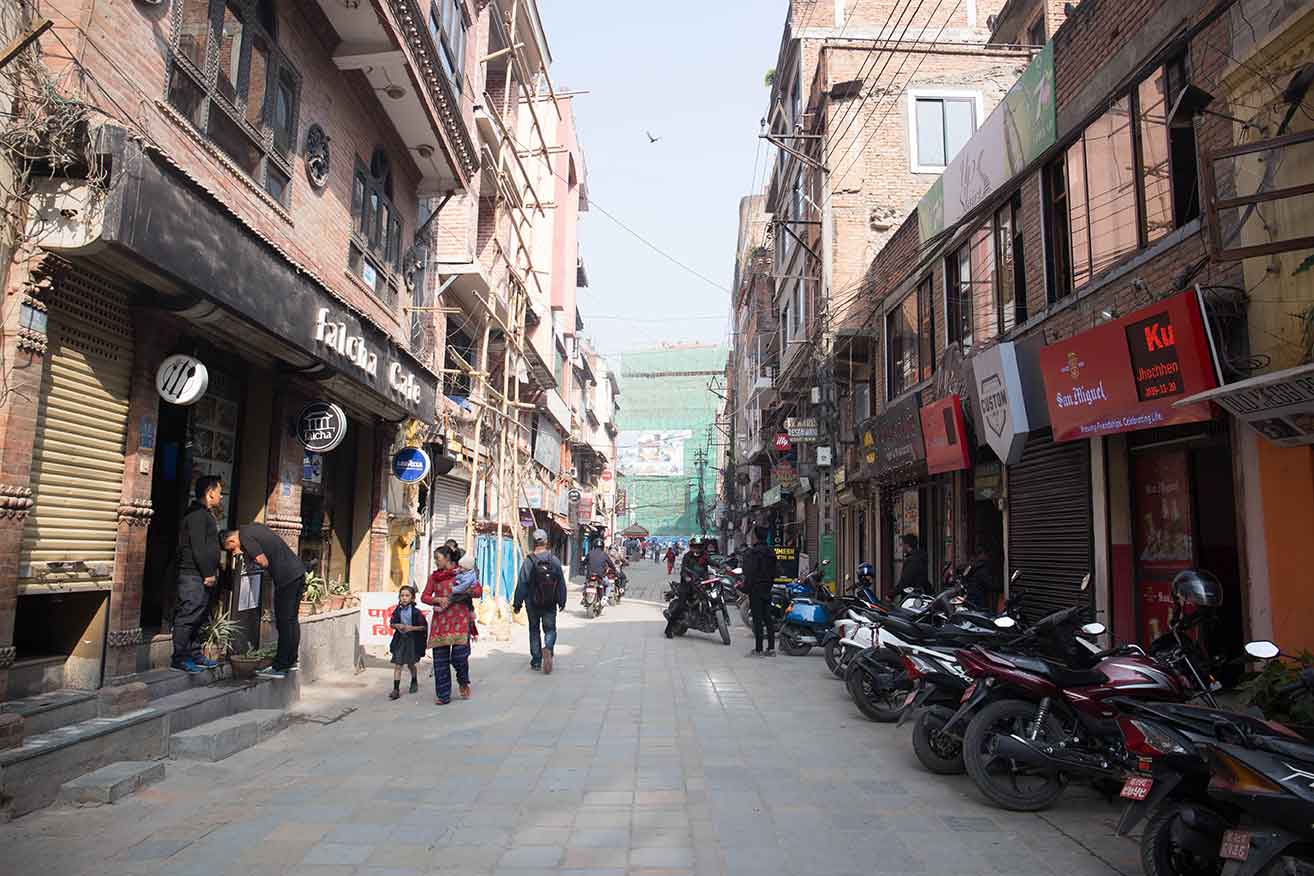While Pokhara remained relatively unaffected by the earthquake, the people there didn’t remain calm when the disaster hit others.
 When I returned to Kathmandu from Pokhara nearly a week after the April 25th earthquake, my city had changed. Strangeness encapsulated this place, as though the whole city was in some kind of trance— buildings in rubbles, people in fear, temporary shelters huddled together. Smiles that outlined familiar faces were stolen by the disaster. The mood of my hometown lay in stark contrast to the city I had left.
When I returned to Kathmandu from Pokhara nearly a week after the April 25th earthquake, my city had changed. Strangeness encapsulated this place, as though the whole city was in some kind of trance— buildings in rubbles, people in fear, temporary shelters huddled together. Smiles that outlined familiar faces were stolen by the disaster. The mood of my hometown lay in stark contrast to the city I had left.
We were in Ghandruk when the temblor struck. Frantic calls back home let us know that Kathmandu had been hit hard, so we decided to stay in Pokhara for a few days till the dust at home settled a bit. The lanes of Nayapool gave way to wider lanes of Phedi and then to the threshold of Pokhara. The first thought on entering Pokhara was that there weren’t many signs of structural damages. If there were any initial shock or panic in people, it had slowly faded as well. The lakeside was as calm and laid-back as it could possibly be. The frequent tremors that were still hitting Kathmandu were faint in Pokhara. Like in any normal day, pedestrians sauntered from one pavement to the next browsing through shop displays, looking for something that would catch their fancy; shops, restaurants, pubs had their services open for all customers; vehicles were in their full run. Pokhara, it seemed, was reverting to normalcy.
However, the story of villages on the outskirts of Pokhara along with several other in Kaski district were something else altogether. The catastrophe had engendered a feeling of brotherhood and humanity amongst many denizens of Pokhara, who stepped forward to help the victims. Trucks loaded with food supply (mostly sacks of rice, salt and lentils) and tarps were sent off from the city to the places where relief materials were most needed. Local shops and establishments also collected donations, and people volunteered either individually, collectively or through NGOs.
I got to talk to Shikshya Gurung, a resident of the city who has been actively involved in the post-quake relief work. After hearing about the dire situation in a small village situated a little further from Bijaypur in Kavre, Shikya decided to do what she could to help. She, along with the members of her family and other relatives, collected cash, food and sanitation materials for distribution. So far, the group has visited 11 villages of Kaski district including Kavre village with relief materials, and helped 73 families. Besides visiting these places, the group also helped victims from Barpak and Larprak, who were residing at Tamu Dhi (Gurung community hall) in Pokhara.
.jpg) Another individual I had interacted with, Bipin Gurung, had his own stories to tell. He had visited Pokharithok village of Gorkha with three other relatives just three days after the quake with relief materials. From then on he’s traveled to several other villages such as Ree VDC of Dhading, forming manageable groups with funds collected mostly through relatives, friends, and friends abroad. In this case, the aid work was managed without external organizations, so distributing relief materials such as tarps and corrugated sheets was without organizational hassles. Also, preliminary need-based study with the help of a local had eased the distribution process.
Another individual I had interacted with, Bipin Gurung, had his own stories to tell. He had visited Pokharithok village of Gorkha with three other relatives just three days after the quake with relief materials. From then on he’s traveled to several other villages such as Ree VDC of Dhading, forming manageable groups with funds collected mostly through relatives, friends, and friends abroad. In this case, the aid work was managed without external organizations, so distributing relief materials such as tarps and corrugated sheets was without organizational hassles. Also, preliminary need-based study with the help of a local had eased the distribution process.
These individuals were but a few among many others in Pokhara who had gathered to work for the victims. There were many others working alongside organizations, clubs and social groups. All this converges at one point of thought: that humanity is the greatest of all vocations, be it of people from Pokhara, Kathmandu or elsewhere.











